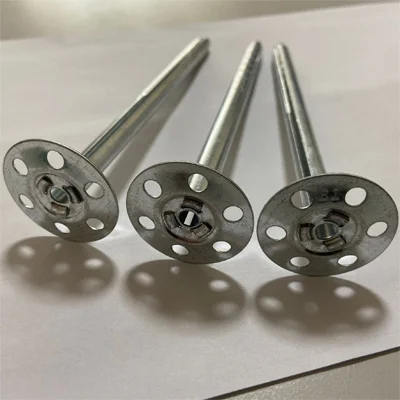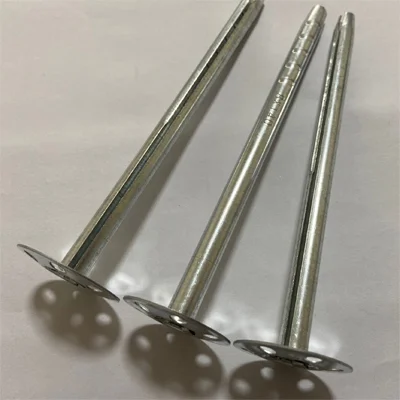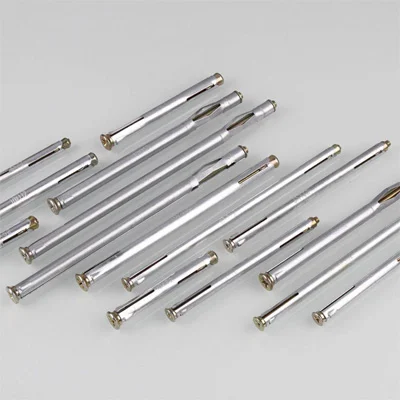caTEGORIES
Tags
How Do Through Bolts Compare to Shield Anchors in Strength?

Posted: August 01, 2025
Categories: News
Tags: news
In big construction and engineering jobs, picking strong anchors is super important. Whether you’re fixing heavy machines, attaching baseplates, or holding up building parts, the anchor’s strength can make or break your project. Through bolts and shield anchors are two popular choices for tough jobs. Each works differently, holds different amounts of weight, and fits specific needs.
This article looks at how these anchors compare, focusing on their strength. As a top supplier of high-quality fasteners, QEWIT provides both types with great testing support and worldwide shipping.
What Are Through Bolts?
Definition and How They Work
Through bolts, sometimes called through-fix anchors or wedge anchors, are strong expansion anchors. You put them straight through a fixture into the base material, like concrete. When you tighten the hex nut, it pulls a cone-shaped end into a sleeve. This sleeve presses hard against the hole’s walls, creating a firm grip.
How to Install Them
Putting in a through bolt is pretty simple. Here’s how it works:
- Drill a hole through the fixture and into the concrete.
- Clean out dust and bits from the hole.
- Push the anchor all the way in.
- Tighten the nut to the right amount to make it expand.
Since the anchor goes right through the fixture, you don’t need to mark or line up holes. This makes work faster, especially when you have lots of anchors to install.
Strength Features
Through bolts are great for holding heavy weights. They handle both pulling (tensile) and side-to-side (shear) forces well. This makes them perfect for big steel connections or mounting machines. But you need to be careful near edges or in cracked concrete. Too much stress might damage the base material.
What Are Shield Anchors?
Structure and How They Expand
Shield anchors have a split, tube-like body, often with three parts. As you tighten a bolt inside, a cone pulls into the sleeve. This makes the sleeve spread out and grab the hole’s sides tightly.

Quick Fixing with Less Prep
Unlike through bolts, shield anchors go into holes drilled before you place the fixture. This makes them great for adding brackets, railings, or supports to existing structures. They work well in solid concrete, brick, or stone. But they’re not as good in hollow materials.
How They Handle Loads
Shield anchors are strong against pulling forces, especially in dense materials. Their shape spreads out stress, but they’re not as good at handling side-to-side forces compared to through bolts.
Load Capacity Comparison
Tensile Strength
Through bolts are awesome for jobs needing strong pulling resistance. When tightened properly, they hold better than shield anchors. QEWIT offers DIN-compliant through bolts in grades 8.8, 10.9, and 12.9. These stay strong even with shaking or vibrations.
Shield anchors are good in solid concrete. But in softer or wet materials, they might not hold as well. Their strength depends a lot on the base material.
Shear Performance
For side-to-side forces, through bolts are stronger. They follow rules like BS 8539 or ACI 355.2 to spread weight evenly along the anchor. This makes them great for heavy loads that move or shift.
Shield anchors handle medium side-to-side loads. Their sleeve spreads force, but it’s not as strong as through bolts for big impacts or constant shifting.
Substrate Sensitivity
- Through bolts: Work best in solid, uncracked concrete.
- Shield anchors: More flexible, good for concrete, brick, or less dense materials.
Installation Considerations
Tools and Tightening Control
Getting anchors right is key to making them strong. QEWIT gives clear instructions and tightening guides for each anchor. You need clean holes and a good torque wrench to get the right strength.
Edge Distances and Spacing
Both anchors need enough space from edges and other anchors to avoid cracking the base material. Through bolts need deeper holes and more space between them. Shield anchors are more compact, so they work in tighter spots.
QEWIT Anchoring Solutions
At QEWIT, we make strong anchors for all kinds of big jobs:
- Through Bolts: Meet DIN 931 and 933 standards. Available in carbon steel, stainless steel, zinc-plated, HDG, or Elementech 1000 coatings for amazing rust protection.
- Shield Anchors: Follow European and ISO rules. Designed for fast setup in concrete, brick, or stone.
Quality, Traceability, and Certification
Every anchor batch gets tough tests to ensure quality:
- Machines check tensile strength.
- Salt spray chambers test rust resistance.
- Torsionmeters and load testers make sure anchors hold up.
Our ISO 9001 certification, 3.1 EN 10204 certificates, and PPAP Level 3 papers help customers meet strict rules for performance and safety.
Support and Customization
Need anchors for important building projects? QEWIT offers:
- Custom sizes and finishes.
- Testing before shipping.
- Optical sorting to catch any flaws.
- Expert advice for your specific job.
With over 30,000 products and shipping to Europe, the Middle East, and Southeast Asia, QEWIT is a reliable choice for top-notch anchors.

Choosing the Right Anchor
Here’s a quick guide to picking between through bolts and shield anchors:
| Criteria | Through Bolt | Shield Anchor |
| Load Capacity | Great for big shear and tensile loads | Good for medium-heavy loads |
| Substrate Compatibility | Best in solid concrete | Works in concrete, brick, or stone |
| Installation Speed | Fast for repeated fixes | Easy for adding to existing structures |
| Removability | Usually permanent | Can be taken out if needed |
| Edge Distance Sensitivity | Needs careful placement | More forgiving in tight spaces |
If your project needs super strength and long-lasting hold, through bolts are the best pick. For quick setups in different materials, shield anchors are easier and cheaper.
FAQs
Q1: Can through bolts be reused after installation?
A: No. Through bolts are expansion anchors. Once tightened, they’re usually permanent. Taking them out might harm the bolt or the base material.
Q2: Are shield anchors good for hollow bricks?
A: Shield anchors aren’t great for hollow materials. For those, try chemical anchors or special cavity fixings instead.
Q3: How do zinc-plated and Elementech 1000 coatings compare for rust?
A: Regular zinc plating lasts about 50–100 hours in salt spray tests. QEWIT’s Elementech 1000 coating, used on through bolts, lasts over 1000 hours. It’s perfect for outdoor or ocean environments.


